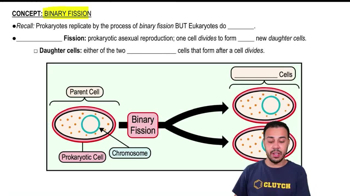Prokaryote Reproduction and Gene Exchange quiz Flashcards
 Back
BackProkaryote Reproduction and Gene Exchange quiz
1/17
Terms in this set (17)
- What is the process called where prokaryotes directly transfer genetic material between two physically linked bacterial cells?Conjugation.
- What appendage is used by bacteria to connect two cells during conjugation?Pilus (plural: pili).
- What is the special plasmid called that is required for bacterial conjugation?F plasmid or F factor.
- What type of bacteria possesses the F plasmid?F+ bacteria.
- What is the term for bacteria that have the F factor incorporated into their chromosomal DNA?F' (F prime) bacteria.
- What type of bacteria acts as the recipient in bacterial conjugation?F- bacteria, which lack the F factor.
- What happens to a recipient cell after it receives the F plasmid during conjugation?It becomes an F+ cell capable of acting as a donor.
- What is an R plasmid and why is it important?An R plasmid carries genes that confer antibiotic resistance, which is crucial in the context of increasing antibiotic resistance.
- What are the three domains of life?Bacteria, Archaea, and Eukarya.
- What is the difference between autotrophs and heterotrophs?Autotrophs make their own carbon compounds from inorganic sources, while heterotrophs use carbon compounds synthesized by other organisms.
- What term describes organisms that use light energy to produce ATP?Phototrophs.
- What is the difference between chemoorganotrophs and chemolithotrophs?Chemoorganotrophs oxidize organic molecules for energy, while chemolithotrophs oxidize inorganic molecules.
- What are obligate aerobes?Prokaryotes that must use oxygen for cellular respiration.
- What are obligate anaerobes?Prokaryotes for which oxygen is toxic and do not use it for cellular respiration.
- What are facultative anaerobes?Prokaryotes that can perform cellular respiration with or without oxygen.
- which of the following statements describes the process of transformation in bacteria?Transformation in bacteria is the process where a bacterial cell takes up free or naked DNA from its environment and incorporates it into its own genome. This process requires the cell to be in a competent state, which can occur naturally or be induced chemically.
- from which cell does the sex pilus originate during bacterial conjugation?The sex pilus, also known as the conjugation pilus, originates from the donor cell, which is typically an F+ cell containing the F plasmid. This pilus facilitates the direct transfer of DNA to a recipient cell during conjugation.



